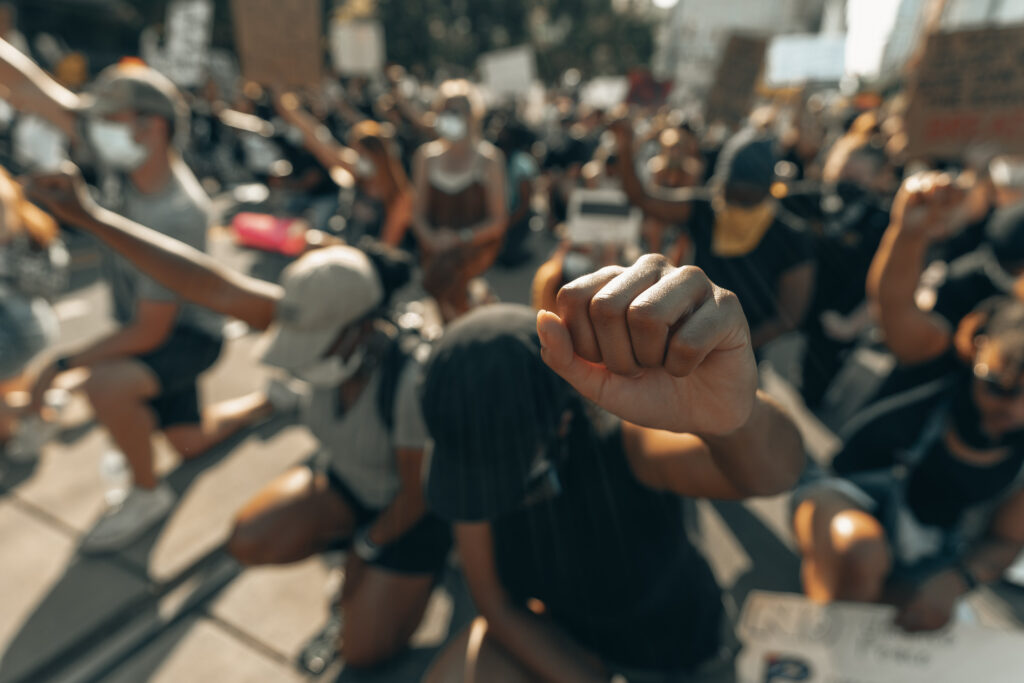Volcanoes are erupting in The Philippines, but on-fire Australia received some welcome rain. The Iran war cries have been called off and The Donald’s military powers are about to be hamstrung by the Senate. Meanwhile, his impeachment trial is starting, and we’re all on Twitter for a front-row seat.
The Third Reconstruction
America's racial justice reckoning

In 2020, America mourned over the battered image of the national soul. We grieved for the loss of a way of life that, for many of us, had never existed in the first place.
In the first months of the year, the global COVID-19 pandemic unfolded domestically as a national crisis of race and democracy. I anxiously read the reports of the contagion’s spread, and I watched in horror as Black folk got sicker faster and died quicker than the members of other demographic groups while living in communities suffering from disproportionate economic misery, from racial segregation, and from too much violence and too few resources. I especially noted the challenges facing Black workers on the pandemic’s front lines, and I marveled at their resilience. The health crisis brought to the fore issues of racial equity and racial justice that Black Lives Matter (BLM) had been advancing for nearly a decade.
And then, as summer began, new generations of social justice warriors marched arm in arm with grizzled veterans of earlier movements. Together, they dreamed of a future capable of healing a past resurrected that May in the last gasps of a dying man, George Floyd, who called for his mother at the hour of his death. I mourned with Black folk and fellow travelers who organized, empathized, and prayed under the banner of BLM. I and millions of others watched, in anger and awe, as monuments of white supremacy that still belligerently dotted the American landscape came tumbling down. And yet, as 2020 turned to 2021, white supremacy came perilously close to ending American democracy itself, with violence of the sort unseen since the First Reconstruction.
A deeper reckoning was under way. It seemed to come all at once, from all sides, touching all institutions from root to stem, inducing a kind of vertigo.
All year, as long-simmering racial wounds turned the world’s greatest superpower inside out, I found myself contemplating the enduring power of American exceptionalism, now exposed before the entire world as a kind of prideful lie. The United States’ Achilles’ heel, as the Civil War had illustrated long ago, is the original and ongoing sin of racial slavery. No Black History Month celebrations, no Martin Luther King Jr. and Juneteenth holidays, and not even a Black presidency were enough to expiate the nation’s commitment to anti-Black violence, to Black misery, to Black death. But now, a deeper reckoning was under way. It seemed to come all at once, from all sides, touching all institutions from root to stem, inducing a kind of vertigo.
I experienced this disequilibrium alongside the rest of the nation and, in some ways, more acutely than most. As more than two thousand cities erupted in Black Lives Matter demonstrations, much of the world sought refuge in books, histories, narratives, stories that might be able to meet the moment. Suddenly, my historical expertise became a sought-after commodity. My natural vocation became a source of knowledge, of education, and perhaps of absolution to born-again racial justice seekers. Corporate spaces that in the past had ignored me now eagerly sought my counsel. Power brokers made personal calls seeking advice. My words mattered on a new scale. By the end of 2020, interpreting Black history as a path to coming to terms with the heartbreak at the center of the American project became, it seemed, my full-time job.
Whether I was speaking to community activists, to students, to fellow scholars, to elected officials, or to corporate leaders, I was often called on to lend not only my expertise as a public intellectual, but also my personal experience. The responsibility of Blackness is service-oriented leadership within a society bent on killing you. The burden of Blackness is being called upon by white folk to make them feel better about this reality. “Give us some hope, please?” became the unasked question from interlocutors ranging from well-meaning would-be allies to curiosity seekers compelled by circumstances to embark on the high-wire act of performing empathy for all the world to see.
My own complicated truth became, like the dark suits worn by Malcolm X and Martin Luther King Jr., a kind of political armor. In virtual lectures and in numerous television and radio appearances, I told audiences that America had reached a moment of existential inflection. The latest hinge point in our Third Reconstruction offered all of us, collectively, an opportunity to transform American democracy by defeating institutional racism and eradicating white supremacy. It would take the work of generations, and we should see this moment as the start of the beginning, rather than celebrating unearned victories.
Black history can bind all of us together, leading us to make different choices in our politics and to pursue policies capable of healing national ailments.
Beyond such rhetorical flourishes, I traced the many strands of the Black experience in the present—the genealogies of mass incarceration, anti-Black policing, voter suppression, the racial disparities exacerbated by the pandemic, and the proliferating BLM demonstrations—back to the past, and especially back to the First Reconstruction. History is more than a useful guide, I argued. It shapes the tone and texture of the present. It does not hold all the answers to how we could achieve a better country: one that would refuse to murder, maim, and punish Black people as a matter of course. But it can shine a light on paths already taken, and on the need to travel down new roads that might lead to justice. Black history can bind all of us together, leading us to make different choices in our politics and to pursue policies capable of healing national ailments.
My hope is that, in the not-too-distant future, Black history will be recognized as casting a spotlight on universal struggles through the particular. From this vantage point, when recalling the moral tragedy of racial slavery or the shame of the racial massacre in Tulsa, Oklahoma, a new generation will ask not “How could we have done that to them?” but instead, “How could we have done that to us?”
<br>
As I sought to illuminate Black history for suddenly curious Americans, I was far from alone. I watched in awe as my generation, and the generation right behind mine, exploded onto the national political scene as torchbearers of Promethean fire, offering to explain the incomprehensible to a public that seemed to require George Floyd’s unconscious sacrifice before they were ready to listen. They deployed Black history as both a political sword and a shield amid a national racial reckoning that necessitated, indeed demanded, that Americans plumb the depths of our unspoken historical traumas. On an even greater scale than during the civil rights and Black Power eras, there was an explosion of interest in “elevating”—read: acknowledging the existence of—Black entrepreneurs, playwrights and poets, musicians, writers, thinkers, activists, and thought leaders. I contemplated what all the newfound attention to Black voices and Black stories meant in the grander scheme of things and, more importantly, how long the attention would last. Would America’s latest contemplation of Black humanity inspire change and transformation, or new systems of violence more pernicious than before?
But there was no doubt that a year spent confronting the ruins of our past felt cathartic for millions of Black people. We longed to tell our stories, mourn our dead, and share our grief. To finally be seen. Not as bit players in a narrative written by others, but as central characters in our unfolding national saga. Recognizing Black folk as the beating heart of American democracy shifted tectonic plates within our national political culture. The earth moved after George Floyd exhaled his last breath.
Excerpted from The Third Reconstruction: America’s Struggle for Racial Justice in the Twenty-First Century by Peniel E. Joseph. Copyright © 2022. Available from Basic Books, an imprint of Hachette Book Group, Inc.


